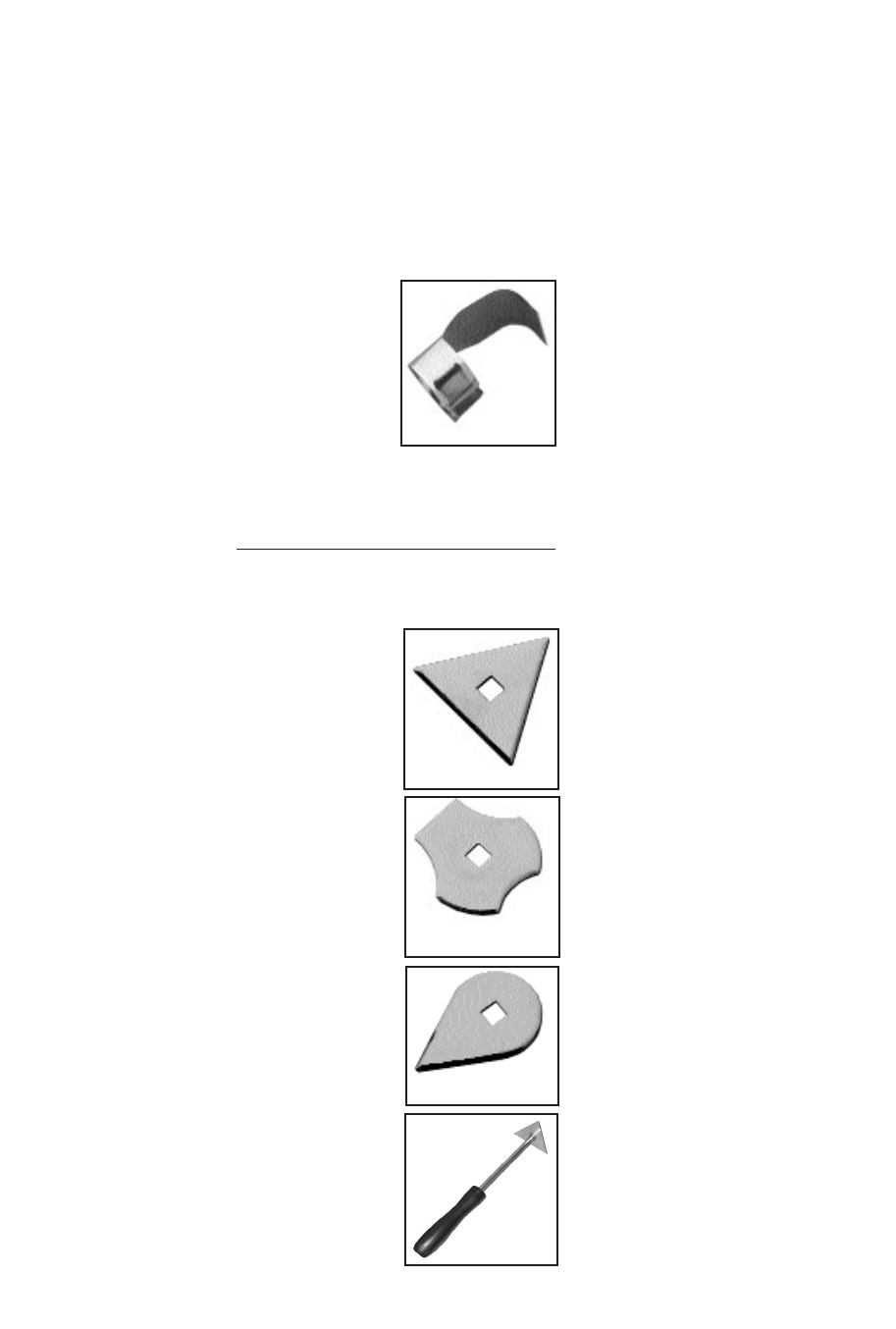
Hook Nozzle
This nozzle
disperses the
heat flow
evenly around
the whole
workpiece. It is
ideal for
defrosting frozen pipes, soldering
pipe work, bending plastics and
heat-shrinking electrical parts.
Shavehooks
Select the required blade from the
set. Take the
shavehook
handle from the
set, remove the
nut from the end,
fit the required
blade then fix in
place by refitting
and tightening the
nut.
Use the triangular
shavehook for
stripping paint
from flat wooden
surfaces and
edges, use the
combination or
heart shavehooks
for mouldings in
convex or concave
profiles.
Remember to
clean the blade
after use with
wirewool and
lightly oil before
storing.
Removing Paint
Choose the required nozzle and fit
onto the heat outlet. Select the
scraper or shavehook required.
Hold the gun with the nozzle
approximately 50mm (2”) from the
surface of the paintwork and
starting with the lower heat setting
move it slowly backwards and
forwards until the paint blisters and
bubbles. Immediately remove the
paint with the scraper or
shavehook. Aim to heat the paint
just ahead of the scraper so that
you can develop a continuous
action. Do not heat the paint for too
long, as this will burn the paint
making it difficult to remove.
Most stickers can also be removed
from paintwork by using the heat to
soften the adhesive. Be careful not
to direct the heat for too long if you
are trying just to remove the
stickers, as this will blister the paint.
Removing paint from window
frames
Always use the glass protection
nozzle. Ensure you have the nozzle
facing the correct way to deflect the
heat away from the glass before
you switch on. Rotate the gun or
nozzle 90
o
as you move to
horizontal or vertical bead. Allow
nozzle to cool before attempting to
turn it. Paint can be removed from
profile surfaces by using a
shavehook and/or a soft wire brush.
WARNING: Be careful Glass can
break easily due to sudden
temperature change!
Not suitable for PVC frames!
4
Hook Nozzle
Triangular Shavehook
Combination
Shavehook
Assembly
of Shavehook
Heart Shavehook










